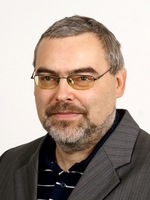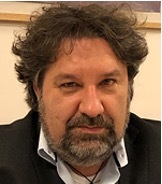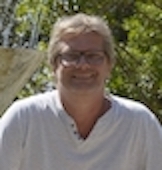WYKŁAD INAUGURACYJNY: “Druga strona medalu, czyli kilka słów o toksyczności nanomateriałów”
Prof. dr hab. Marcin Kruszewski
• Absolwent Wydziału Biologii Uniwersytetu Warszawskiego, pracę doktorską obronił na Wydziale Biologii i Nauk o Ziemi Uniwersytetu Jagiellońskiego w 1995 r. Stopień doktora habilitowanego w Instytucie Biochemii i Biofizyki PAN w Warszawie w roku 2000, a w 2008 uzyskał tytuł profesora nauk biologicznych z dziedziny biologia.
Po studiach podjął pracę na Wydziale Inżynierii Sanitarnej i Wodnej Politechniki Warszawskiej, a potem w Instytucie Chemii i Techniki Jądrowej w Warszawie, gdzie pełni funkcję kierownika Centrum Radiobiologii i Dozymetrii Biologicznej. W latach 1998 – 2006 pracował w Zakładzie Hematologii Doświadczalnej Centrum Onkologii, a od roku 2009 pracuje w także w Instytucie Medycyny Wsi im. W Chodźki w Lublinie, w Zakładzie Biologii Molekularnej i Badań Translacyjnych.
• Obszary działalności naukowo-badawczej:
(1) toksykologia i mutageneza środowiskowa, biomonitoring, toksykologia molekularna, dozymetria biologiczna, mechanizmy sygnalizacji komórkowej,
(2) nanotoksykologia i komórkowe mechanizmy odpowiedzi na działanie nanomateriałów,
(3) biologia molekularna i epigenetyka, w kontekście środowiskowych i indywidualnych czynników warunkujących odpowiedź organizmu na ksenobiotyki oraz adaptacji metod biologii molekularnej dla potrzeb diagnostyki i prewencji chorób nowotworowych, cywilizacyjnych oraz neurodegeneracyjnych (badania translacyjne).
• Współautor ponad 230 publikacji z listy filadelfijskiej, 3 patentów, indeks H = 34. Kierownik/wykonawca 34 projektów badawczych. Promotor 6 prac doktorskich. Wymieniony na liście „The World’s Top 2% Scientists” przygotowywanej przez Uniwersytet Stanforda.
LECTURE: “Human biomonitoring of emerging chemicals”
• Prof. Dr. Adrian COVACI (49 y) is a Professor of Analytical and Environmental Toxicology at the University of Antwerp, Belgium. He is the current director of the Toxicological Center in the Department of Pharmaceutical Sciences. After he has acquired a PhD in Chemistry in 2002, he became a full professor in 2012. • Current fields of interest are the “Application of advanced mass spectrometric techniques to the human exposome”, “Human biomonitoring of emerging contaminants”, and “Metabolomics and human metabolism of xenobiotics in in vitro and in vivo systems”.
• He has co-authored more than 600 articles in peer-reviewed journals and has an H-index of 89. His papers have been cited more than 23,000 times which has earned him the title of Highly Cited Researcher (2015, 2016, 2017, 2018, 2019, and 2020).
• Since 2011, he is the Belgian representative in the Division of Chemistry in the Environment of the European Association for Chemical and Molecular Science (EuCheMS). • He is also co-Editor-in-Chief for Environment International (IF2019: 7.60) and an Associate Editor for Science of the Total Environment (IF2019: 5.60).
LECTURE: “Intoxicating Fish”
Prof. Tylżanowski is a Senior Scientist at the SKELETAL BIOLOGY AND ENGINEERING RESEARCH CENTER at KU LEUVEN, Belgium. • My research interest focuses on the molecular mechanisms of patterning and cellular differentiation using developing vertebrate limb model system. In particular I am interested in the molecular and genetic mechanisms involved in the synovial joint specification and induction as well as tendon and ligament formation.
• To accomplish our goals we employ two different strategies. In one of them, we investigate skeletal gene function using model organisms such as mice, chicken and zebrafish. The other strategy focuses on the identification of novel players in skeletal development by identifying hereditary human skeletal malformations and searching for the linked mutations. The mutation identification is carried out using various NGS-based technologies such as SNP arrays or Whole Genome Sequencing. To identify the function of novel genes we frequently use zebrafish as a pathway exploration tool.
• Finally, using stem cell technology, we are exploring the possibility of creating cell populations that have the ability to rebuild bone, cartilage and eventually the full joint and growing limb in vitro.


